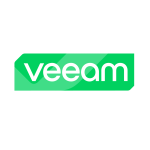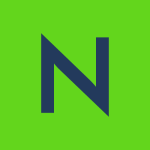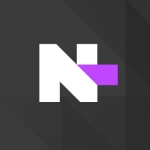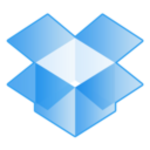What is our primary use case?
The solution is for file sharing and networks. If we have a cluster in a network, for example, two servers needed to use a common file, NetApp is a good tool. You can spin up a network from the other cluster, so if your application is a multi-node cluster and you need a common place to share the drag with, you can use NetApp for that.
How has it helped my organization?
At the time we implemented it, there wasn't any other solution. We needed a cluster, and we needed a common place where both nodes can share a file. There was not a good solution at that time besides NetApp. Now, there is. There's EFS. EFS is for Linux only. NetApp works for Windows. However, now, AWS is competing with NetApp with FSx. However, NetApp also has a feature for FSx.
What is most valuable?
The cluster needs to use a common file share, so NetApp just does that.
They provide extra security, backups, and many other features with it.
One of the most important aspects is the flexibility to expand it. It's very scalable.
We can easily file share with AWS.
ONTAP is great for helping you migrate on-premise workflows to cloud environments. I would rate it a solid eight out of ten. It does what it's supposed to do. It was just expensive.
My impression of ONTAP against native AWS integrations is that FSx is much cheaper. That said, NetApp has more flexibility. Therefore, it is competitive against AWS. NetApp has an advantage in its class, and FSx has an advantage in terms of its low cost. FSx just lacks features.
In terms of ONTAP integrations with AWS native services like AWS Backup, NetApp uses AWS, so in a way, it's already backed up. If you want to provision one terabyte being backed up, they would provision ahead of time, so that way you protect your data.
What needs improvement?
The cost needs improvement. Cost should go down. If you have a company with many servers, then the cost is down. However, if you're in a situation where you only need it for one function, then the cost can be overwhelming.
For how long have I used the solution?
I've been using the solution for two years.
What do I think about the stability of the solution?
It's pretty reliable. It's an HA solution, so even if one cluster goes down, another cluster can support everything.
What do I think about the scalability of the solution?
The solution is extremely scalable. For example, if you initially subscribe to one terabyte, and then all of a sudden, you need two terabytes, you can dynamically expand it. You can add a feature within NetApp, and it will automatically increase it for you. You never have to worry about the space getting out of control.
How are customer service and support?
Technical support is not bad. NetApp does a lot, quietly in the background. I don't even have to look for support for the most part. In most cases, when I do look for support assistance I get my questions answered.
They could improve their response time. Once, there was an AWS outage and it took a long time to get a response.
How would you rate customer service and support?
Which solution did I use previously and why did I switch?
We started using this solution before AWS developed its own tool called FSx. It's very similar to FSx. However, NetApp provides even more features than FSx does.
NetApp is a multi-cluster. Like FSx, the cluster is controlled by AWS itself, so you don't see that background feature. Unlike NetApp, all the deployment is in our control, so we can use that. Then there was a node feature that you can get with NetApp support in addition to the cloud support. Those are the key features. It's a little more expensive than FSx. However, there are good reasons for it.
We've been using NetApp for a while, so we'll just stick to it.
How was the initial setup?
The initial setup was extremely easy. It was extremely simple to set up; it's a couple of clicks of a button, and it will then have an HA cluster for you. That's one of the good features of NetApp, the ease of setup.
What about the implementation team?
I deployed the solution basically by myself.
What was our ROI?
We needed an HA solution, which we got from NetApp, so that's the only return we've received. Otherwise, we would have to go with another risky option. We do now have the option of moving over to FSx as well.
What's my experience with pricing, setup cost, and licensing?
Cost-wise, ONTAP is a bit high.
Which other solutions did I evaluate?
We looked into FSx, which came out after implementing NetApp. We tried to use the AWS NetIQ solution with the EFS. That said, their EFS is only for Linux. There was a way to do EFS for Windows also by using Samba Share, yet that gets a little bit complicated and unreliable, so we chose NetApp at that time to keep things simple.
What other advice do I have?
We have not reduced the amount of our storage with ONTAP. That was not our intention. We are not using NetApp to reduce our storage costs. We needed a reliable HA solution; that was our main goal.
We have not reduced any costs by using ONTAP. With our services, we are only using them for one thing. If we start using the product for many other functions, it's definitely a good solution. So we are trying to find other use cases for NetApp. The more we use it, the more we reduce costs.
NetApp does offer a ransomware solution, which AWS NetIQ does not offer yet. That said, we haven't faced an issue with ransomware yet. Still, that is one of the key features of NetApp that AWS does not provide yet.
I'd rate the solution eight out of ten. I'd rate it higher if the price were cheaper.
Disclosure: My company does not have a business relationship with this vendor other than being a customer.


















